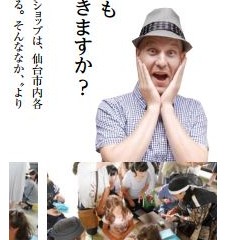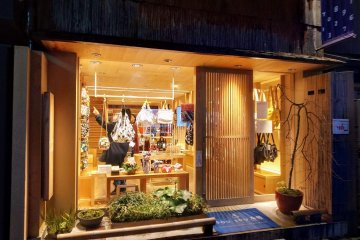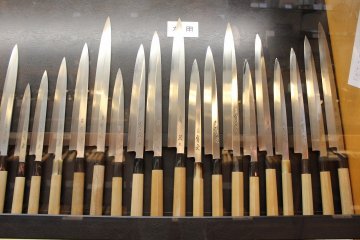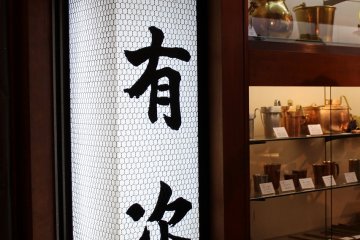A chef is inseparable from his or her knife. In order for a chef's vision to become reality, only a knife which cuts with precision will ensure satisfaction.
The ability to cut something means much more than simply slicing something in two. The concern is how cleanly the surface of a knife can separate itself from what is being cut. If a knife which can't cut well is used during food preparation, it will be impossible to produce a definitively beautiful cuisine.
For example, sashimi prepared with a knife which can't cut leaves a jagged edge on the slices of raw fish. If you dip this sashimi into soy sauce, too much will enter into the torn edge. All you will taste is a soy sauce flavor in what should have been a tasty meal.
On the other hand, a knife which cuts well will not allow soy sauce, dashi, etc. to invade the cuisine.Therefore, the chef is able to control the taste of the dishes with a knife which can truly cut.
Today, alongside the popularity of Japanese cuisine, Japanese knives are known for their high quality and functionality. Japanese knives have become desired by chefs all around the world.
The history of Japanese knives is the history of Japanese swords. However, when guns were brought to Tanegashima during the Middle Ages, the always looking for a profit Osaka merchants evolved iron processing technology to produce not swords, but guns. Blacksmiths, now with traditional techniques and a new technology used the opportunity to try something new: making the world's first professional kitchen knife.
The time was 1560 in Kyoto when a blacksmith established "Aritsugu" (有次). The store was named after its first generation founder Aritsugu Fujiwara. Even 400 years later the trademark company proudly continues business.
Broadly speaking, there are three types of knives used in Japanese cooking: sashimi, pointed carvers, and all-purpose. These types are subdivided by detailed objective. Also they are sorted by shape because cooking methods in the Kanto and Kansai regions require different food preparation techniques, and therefore tools.
All of these varieties are for sale at Kyoto Nishiki Market's Aritsugu. You'll be in good company shopping as the store welcomes chefs from all around the globe. However, not only chefs, but anyone is able appreciate the value of these Japanese knives. Of course the price is expensive, but you get much more than you pay for with such an excellent product. For those interested in buying one, you'll have peace of mind knowing a knife purchase includes a lifetime maintenance guarantee.
An Aritsugu knife is a real knife. The usability of basic and cheap diecast knives versus the fire-forged knives of Aritsugu is incomparably different. With 400 years of happy customers, you'll notice the difference too. Staff will explain how to care for the knives to all customers at time the time of purchase or when asked.
Let's make an appetizing meal with Aritsugu's Japanese knives.










